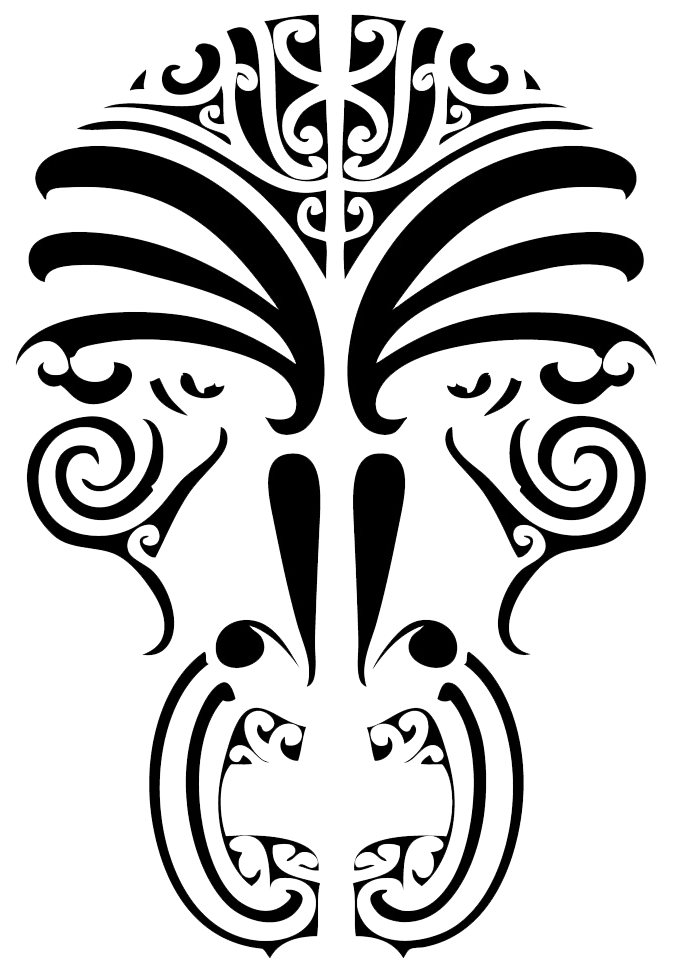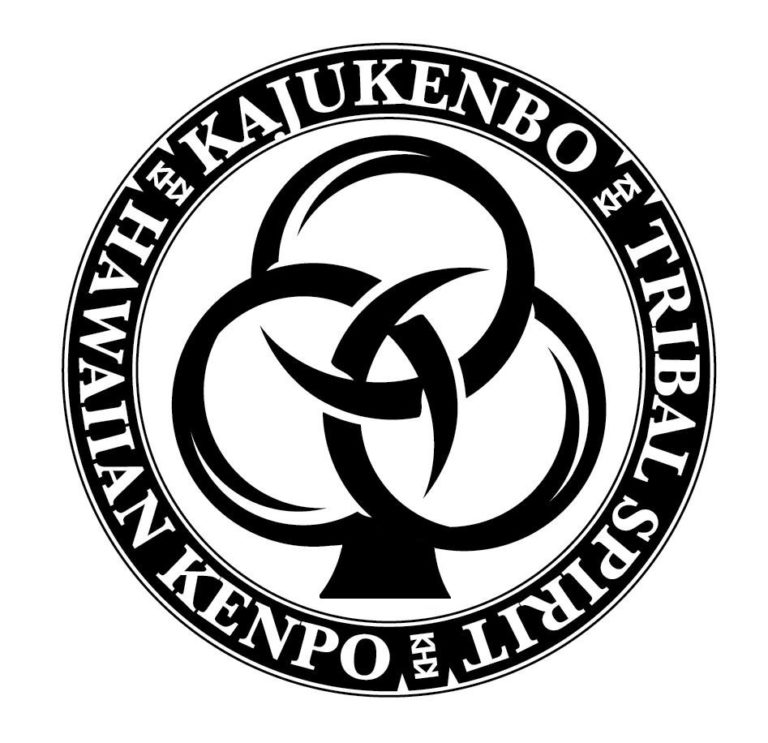KAJUKENBO - HAWAIIAN MARTIAL ART - Self- Défense
A LITTLE HISTORY
A hybrid martial art of self-defense
The KJKB was created between 1947 and 1950 in Honolulu, Hawaii under the leadership of Master Adriano Emperado, along with four other experts in different styles of martial arts.
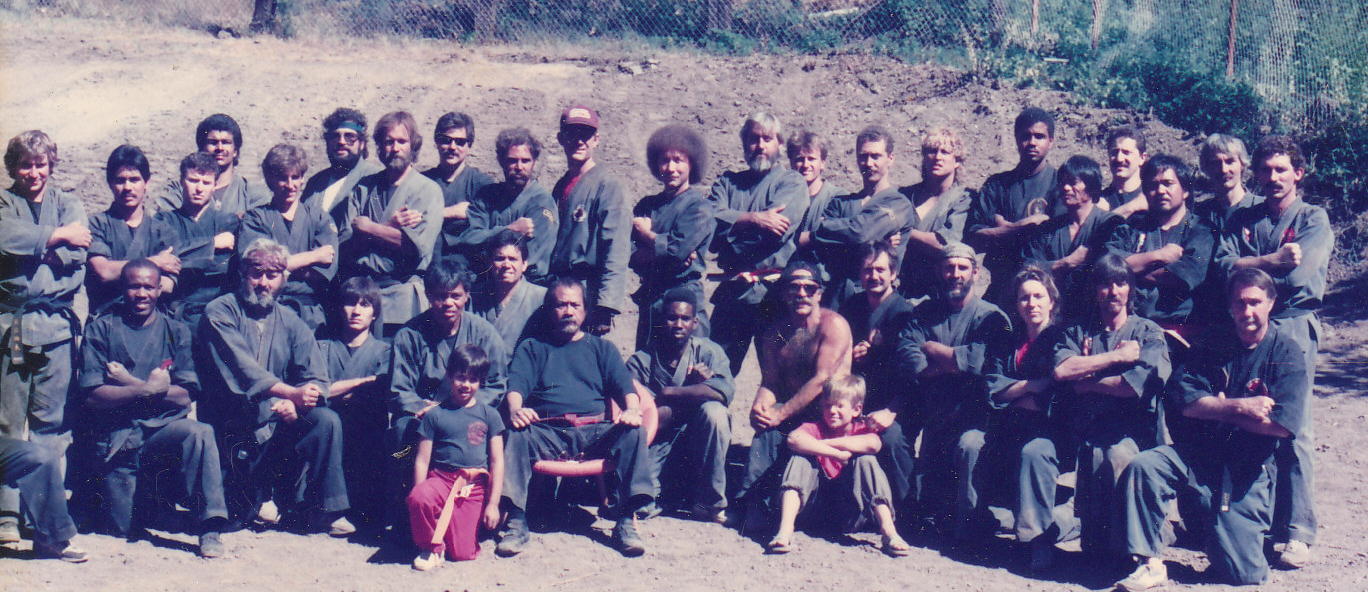
Genesis of style.
Master W.K.S. Chow the father of Hawaiian Kenpo.
W.K.S. Chow was the Master who introduced Kenpo to Honolulu.
Master Chow taught his Kenpo method, which was derived from the Chinese family method to which he was heir.
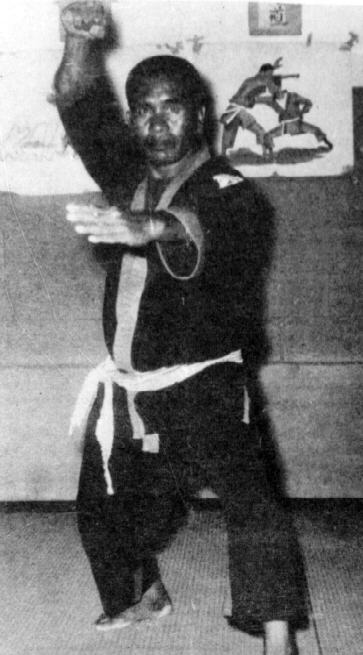
Master William K s Chow
It can undoubtedly be said that he gave birth to all styles of "Hawaiian Kenpo".
His fighting method was fast and explosive, a principle found in Kajukenbo but also in other Hawaiian styles, Ed Parker Kempo, Shaolin Kempo, Lima Lama and other schools.
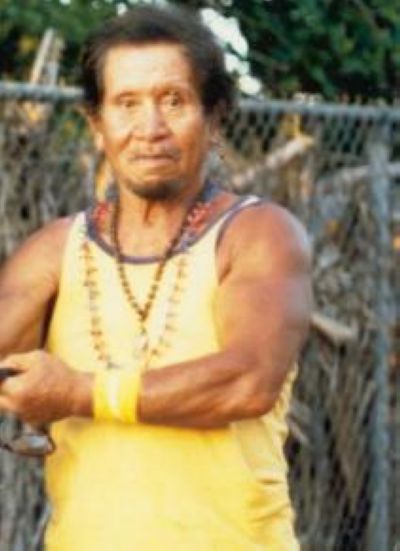
Maitre William K s Chow
Naissance du Kajukenbo
Sijo Emperado.
Master Adriano Emperado was practicing English boxing when he discovered Kenpo from Master W.K.S. Chow.
As a young man, Mr. Adriano Adriano Emperado practiced Kali, “Doce pares” and “Lameco escrima”, styles he learned from his stepfather.
Master Emperado was a student of Master Chow and also his principal instructor. He led the school for several years and trained many of the great Hawaiian Kenpo teachers like
GM ED Parker.
Many founders of other Hawaiian styles studied with Master Emperado and received their degrees from Emperado himself.
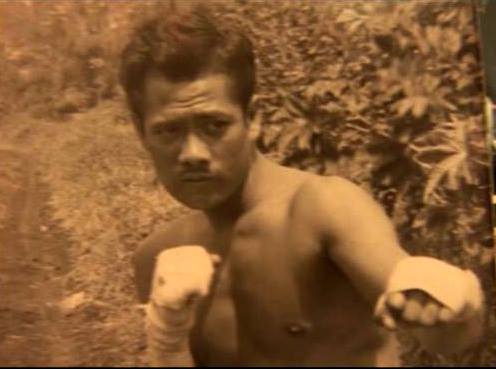
young Sijo Emperado in boxing time.
Being a professional soldier and always with an idea of openness and plurality, he joined forces with four other experts from different martial disciplines, all of whom were also soldiers and amateur boxers.
- Peter E Choo du Tang so do (karaté coréen).
- Joseph Holk duJudo Kodokan.
- Clarence Chang Sim lum Pai Kung Fu Chinese Boxing
- Frank Ordonez Ju jitsu Sekeino.
The five founders of the style had participated in various conflicts, including the Korean War and World War II. One of them, Clarence Chang, died in Korea. Some of them became instructors in the army.
Returning to civilian life, they ended their careers in the police and security services.
Master Emperado was a bodyguard to the Governor of Hawaii.
MMA - Kick Boxing - jitsu - boxe - krav maga- boxe thaï - self-défense - self-défense féminine - karaté - kajukenbo- Penchak silat - lutte - Aïkido
Style Name.
The name Kajukenbo is an acronym for
- Ka pour Karaté (Tang so do coréen)
- Ju pour jutsu et judo
- Ken pour Kenpo
- Bo pour boxe chinoise et boxe anglaise.
The association of the five founders of Kajukenbo aimed to bring together and mix their knowledge in order to create a synthetic method with a military consonance dedicated to self-defense and close combat in the same way as close combat.
Back in their civilian lives they are open to teaching the public in order to create a tough and pragmatic self-defense.
An expanded and modern method complemented by contributions from Hawaiian Kenpo, Judo, ju-jutsu, Kali, Chinese boxing and English boxing.
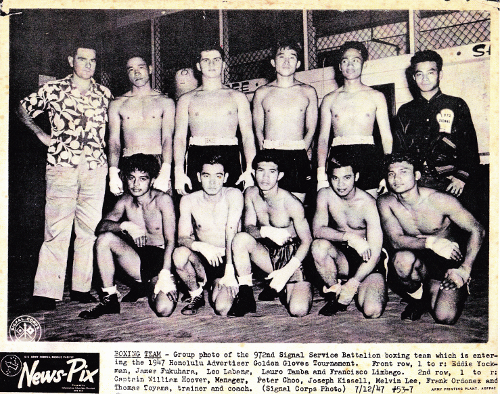
Photo KJKB founders Peter Choo / Franck Ordoñez English boxing tournament military base.
Geographical and social context.
The Hawaiian Islands are a true ethnic melting pot of different cultures where tradition and modernity have always coexisted.
From the beginning of the 1900s, there was a large wave of immigration from Asia, Chinese, Filipinos, Japanese, Koreans but also North Americans, South Americans, Europeans, the Spanish being the first Europeans to settle in the Hawaiian archipelago.
All these migrants mixed with the pure-blooded Hawaiians who today represent only 20 to 25% of the current population.
Cultures have coexisted, mixed in many areas and of course in the field of martial arts.
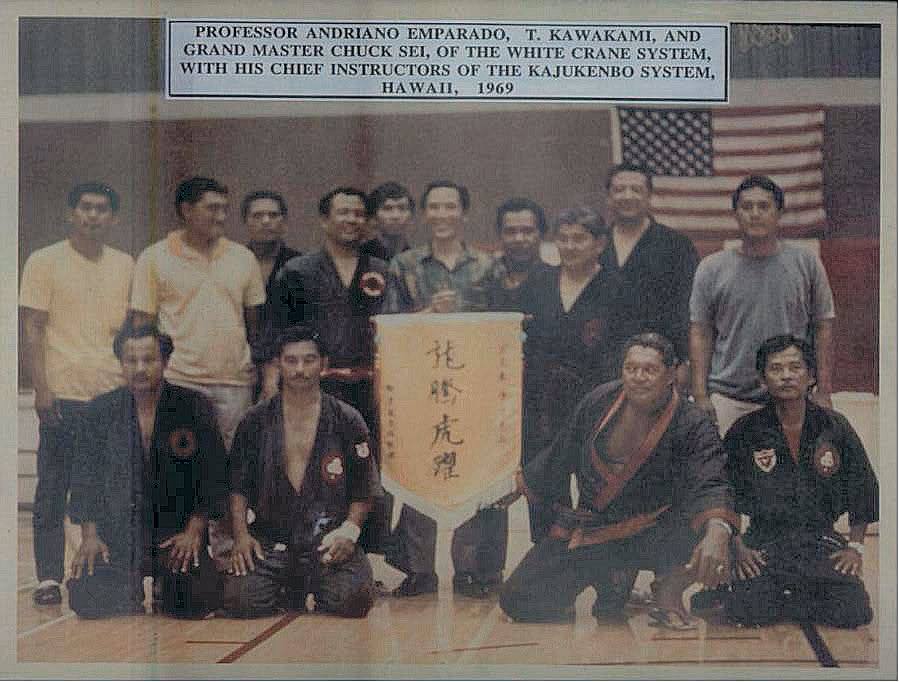
Kaju Hawaii old school
Due to this mix of immigration, the founders of the KJKB were keen to create a martial art that was specific to the modern Hawaiian mindset but also inspired by ancient Hawaiian warriors and their traditional martial arts, Lua and Moko Moko.
A technically broad, open-minded, and self-defense art eager to enrich itself. A living, evolving style.
Many surfers of this era practiced Kajukenbo, a whole Hawaiian state of mind.

It is this approach, so unique in the world of martial arts, especially at that time (1945 to 1950), which made KJKB a totally composite and marginal art.
This is why it is considered one of the first Mixed Martial arts.
The direction of art "The Hawaiian spirit".
Hawaiian identity is well represented in Kajukenbo. The spirit of Hawaiian warriors, great conquerors, warriors, and navigators, has a real influence on the roots of Kajukenbo.
The KJKB uses the technical principles from traditional martial arts, judo, jut-jutsu, kung-fu with their martial values.
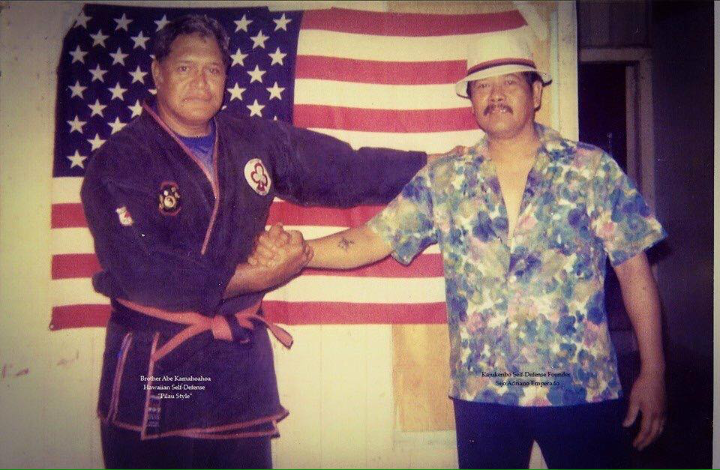
Sijo Emperado et GM Bro Abe Kamahoahoa
The "master-student" relationship, the system of grades and belts, derived from Chinese, Korean and Japanese arts, as well as the Katas, sometimes called Hakas, which, however, are not always practiced in all schools.
The founders being military, the KJKB focused on self-defense.
However, many practitioners participated in numerous "open style" tournaments of the time, kick-boxing or MMA competitions, a sport before its time.
Today, some KJKB schools have moved on to championships like the UFC, some of whose champions have become famous.
The best known are Chuck Lidell and Sage Northcut.
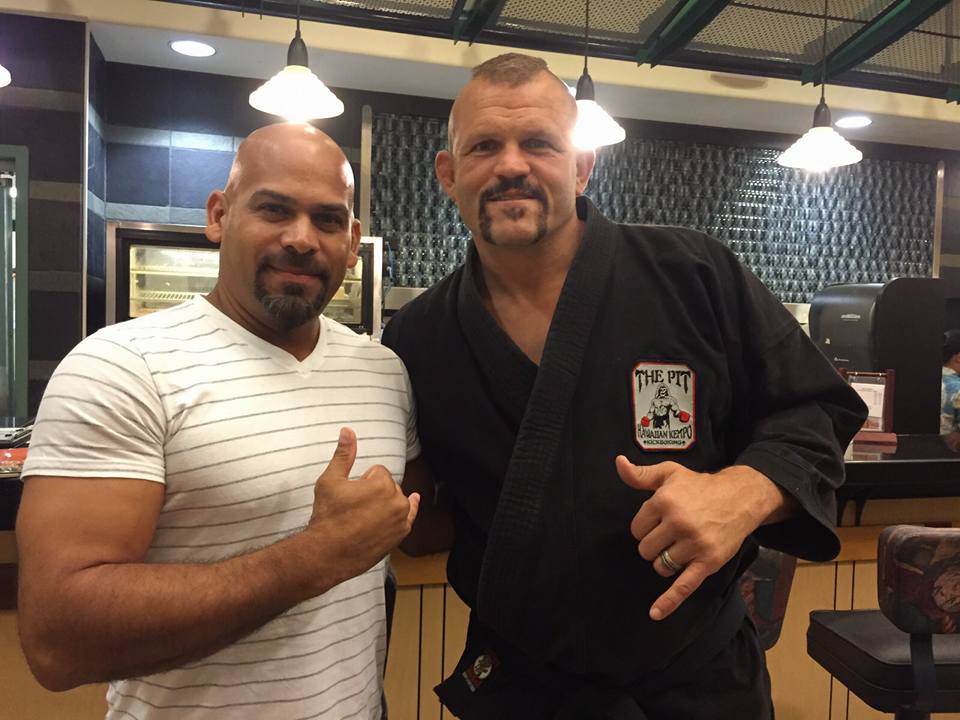
Photo Chuck Lidell Champion UFC à droite de la photo
For Kajukenbo there is no duality between combat work and self-defense techniques.
Both lines of work have their rationale and application.
Dans notre école nous avons créé une partie spécifique de travail pieds poings le Kaju-Boxing ( techniques pieds-poings assimilés au kick-boxing ) qui nous permet de developper le travail sparring en collant à notre propre sensibilité martiale.
Nous pratiquons les combats souples à chaque séance en première partie puis nous enchaînons sur les techniques de self issues du Kenpo hawaiien.
L’éthique du Kajukenbo : Body - Mind - Spirit.
C’est le principe des trois niveaux de conscience.
Ce principe est extrêmement important il façonne l’évolution et la conscience du pratiquant.
A chaque début de cours, les pratiquants saluent ces trois niveaux en faisant claquer leur ceinture au dessus de leur tête.
Les cours se passent généralement en Kimono mais pas toujours ;
Certains entraînements peuvent se passer en tenue de ville pour des sessions spécifiques ou en tee-shirt et rash guard pour pratiquer le Kaju-Boxing, dans notre école.
Principes techniques.
La spécificité du Kajukenbo est l’utilisation des principes originels du Kenpo hawaiien, explosivité, vitesse, puissance, logique.
Ce sont nos bases issues du Kenpo puis enrichies, par les styles des autres arts fondateurs du KJKB à savoir le Ju jitsu, le karaté Tang So do, le Kung fu, le Kali, la boxe.
La recherche sur les différentes distances de combat et les possibles réactions des autres styles est une composante importante de l’art. La gestion du clinch puis des emmenés au sol est une partie importante.
Contact et état d’esprit.
Le travail avec contact, progressif et bien géré est incontournable.
L’objectif étant l’endurcissement corporel et mental mais aussi le souci du réalisme, justesse des réactions, justesse des distances.
La bonne méthode est d’apprendre sans se blesser. En self-défense savoir exécuter des techniques mêmes très efficaces, n’est pas suffisant si on ne peut les exécuter pendant un moment de stress.
Personnaliser.
L’art doit être adapté à chacun. Toute personne est différente ce travail doit donc être personnalisé par un bon encadrement avec un bon instructeur.
Savoir gérer.
Notre style est un art dur il donc primordial d’apprendre à contrôler nos actions, éviter de blesser, éviter de se blesser. Se blesser n’aurait aucun sens, ni pour l’élève qui se découragerait trop vite ni pour l’enseignant qui en fin de saison, se retrouverait sans élèves.
Attitude.
Ce travail à pour objectif de doter les pratiquants d’une attitude mentale respectueuse et humble.
Les respect et la camaraderie qui existe dans le pratique de notre art imprégnée de l’esprit de partage hawaiien fait de notre art un style moderne et humain.
OHANA "famille" en hawaiien.
Cette fusion, cet état d’esprit permet d’acquérir une véritable assimilation en profondeur.
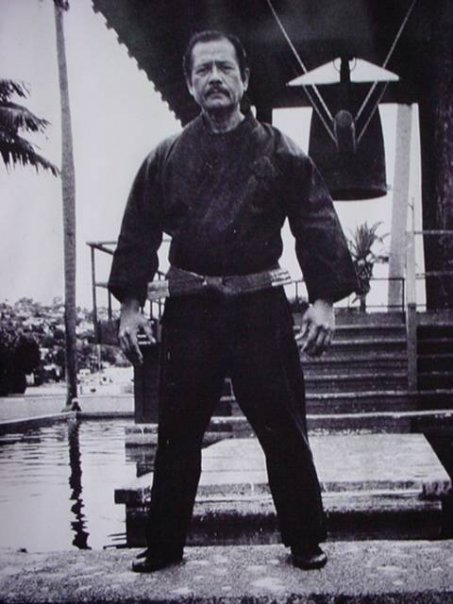
Sijo Emperado
Le Kajukenbo contemporain.
Techniques de combat en Kajukenbo. Depuis le début du KJKB et jusqu’à nos jours, la mixité entre le sport combat et la self-défense, cohabite naturellement sans aucune distorsion, l’un enrichissant l’autre.
Les fondateurs avaient tous pratiqué la compétition dans leurs disciplines respectives mais aussi en boxe anglaise.
A noter que l’influence de la boxe anglaise dans le Kajukenbo est parfois omise alors que beaucoup de principes fondateurs du style, viennent de la boxe anglaise.
Entrainement.
On doit permettre à notre corps et à notre cerveau, l’apprentissage et l’imprégnation. Il faut prendre le temps qu’il faut, le temps qui est nécessaire à chacun.
L’imprégnation et l’apprentissage ont comme outils, la répétition et le temps. Il est bon de se fixer des objectifs, le passage des grades peut être un excellent outil.
Toutes les étapes nécessaires à savoir, préparation, examen, gestion du passage, remise en question c’est une démarche qui permet une évolution saine
La construction d’un mental et d’un corps à travers une pratique dure et rigoureuse mais aussi logique, en adéquation avec la réalité.
Un art complet de self-défense.
L’enseignement du Kajukenbo par Joe et Luis Diaz.
« Nous pratiquons le KJKB depuis 25 ans au sein de notre organisation le Kajukenbo Tribal Spirit.
Nous sommes rattachés directement à la KSDI la Kajukenbo Self Défense Institut qui reste dans la pure lignée de Maître Emperado le principal fondatieur.
La KSDI est l’organisation mondiale officielle du Kajukenbo reconnue et créée par Sijo Adriano Emperado le seul 10 dan, Sijo étant le terme utilisé pour fondateur.


Sijo Emperado Paris 2001
Sijo Emperado à Paris accompagné de Maitre Abad, Maître Angel Garcia et Luis Diaz.
Rapide rappel de nos activités:
- Nous dirigeons des stages tout le long de l’année.
- Nous sommes intervenus durant une période neuf ans au Koweït où nous avons formé beaucoup de pratiquants ainsi que des nombreuses ceintures noires. L'école du Koweit est actuellement dirigée par Hasan Al Kaabi 6 dan, instructeur au sein de notre association France.
- Nous avons animé de nombreux stages en France, en Suisse, en Belgique, au Portugal, en Espagne.
- Nous avons formé plus d’une cinquantaine de ceintures noires et plus d’une trentaine d’instructeurs.
Vous pouvez nous contacter pour du coaching, des cours privés en Kajukenbo ou en self-défense basique» ou pour une formation instructeur.
Vous pouvez acquérir notre programme France en ligne. Ce programme pet permettre de vous initier à notre style. il ne donne pas droit à une certification en ligne ni à l'obtention de la Ceinture Noire.
Vous pouvez nous contacter pour une intervention en entreprise stage découverte, loisir ou un suivi remise en forme à travers les arts martiaux.
Luis et Joe Diaz
Professor 8 Degré reconnu par la KSDI
Directeurs techniques France et Belgique au sein de la KSDI mondiale.
World wide ambassadors
Kajukenbo Self Defense Institut France officielle. Kajukenbo Self-Défense Institut France.
N’hésitez pas à nous contacter, n'hésitez à nous rejoindre.
Facebook : Kajukenbo France.
Instagram: Kajukenbo France.
Chaîne Youtube : Kajukenbo France KSDI
